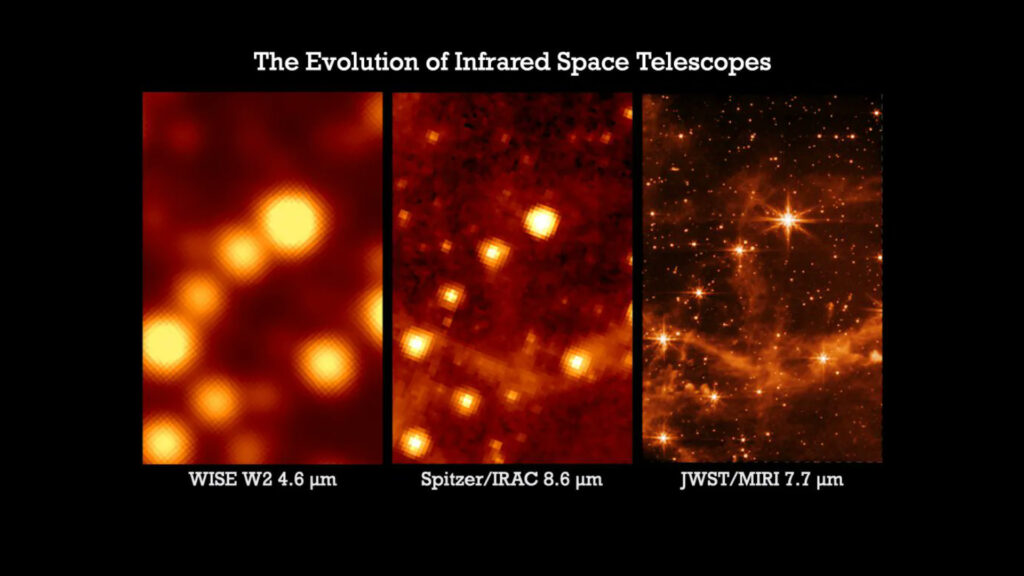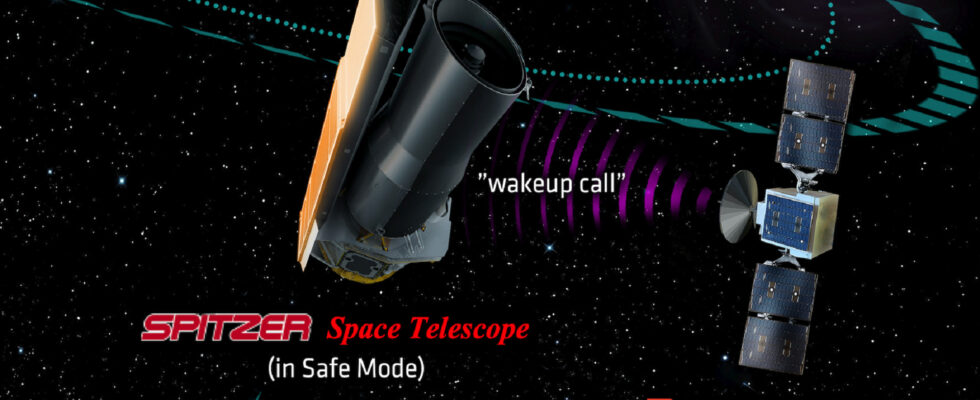The Spitzer Space Telescope retired in 2020. Still, an ongoing project hopes to reignite it, sending a craft to do maintenance nearly 300 million km from Earth.
NASA cut off communication on January 30, 2020: the Spitzer space telescope fell asleep. A fanfare start after 17 years of good and loyal service, on the part of this mission which should have lasted less than 3 years when it was launched in 2003. And yet, the machine could not have said his last word. A project is underway to bring it back to life.
” Our goal is to relaunch its communication systemsummarizes for Numerama the main person in charge of this mission, the astrophysicist Shawn Usman, so that it can send data back to Earth again. »
The founder of the American startup based in Washington DC, Rhea Space Activity, plans to build a satellite called Ressurector. A small machine of 350 kilos which would go to meet Spitzer, at nearly 300 million km from the Earth, by making an orbit behind the Sun, and which would wake him up. ” Ressurector would serve as a relay between Spitzer and Earthsays Shawn Usman. Data would pass through it, which requires advanced radio technology. »
Spitzer is asleep, but not dead
This scenario relies on Spitzer functioning normally, which is supposed to be the case. If NASA decided to put it to sleep in 2020, it was because it was drifting further and further from Earth, with a badly oriented antenna, which made communication difficult. But, the rest, including the batteries, is supposed to still be in good condition, even though it’s a 20-year-old machine. The liquid helium which was used to cool its instruments was exhausted in 2009, but its capacities remained correct.
In any case, Shawn Usman believes in it: “ If we are able to turn it back on, it should be able to continue its mission as before, with the same abilities. Of course, it will be difficult, but we believe in it. The other hurdle, aside from the presumed health of the telescope, is its distance. Ressurector will have to be equipped with a very sophisticated navigation system, in order to be able to arrive at its destination without incident, all while locating itself thanks to an optical system which detects nearby asteroids.
That said, is it really necessary to wake up a satellite launched two decades ago, when others have since taken over? Spitzer was the actor of many discoveries thanks to his observations in the infrared. The telescope specializes in the observation of comets, asteroids, but also exoplanets and distant galaxies. His discoveries are countless in many fields related to astrophysics, and all the data he has collected are far from having been dissected. Nevertheless, its skills are well below those of the James Webb Space Telescope (JWST).
The commissioning of the JWST was also one of NASA’s motivations to put an end to Spitzer, the maintenance of which cost the American space agency dearly every year. Now, this successor observes the same targets as Spitzer, on the same wavelengths, but with much higher degrees of precision. ” I think the two can be complementarysuggests Shawn Usman. The JWST is most useful for very distant objects, but Spitzer can also be used to target closer objects, such as near-Earth asteroids. There is always the possibility of doing science. »

Towards a launch in 2026
A motivation that hides another challenge: technology. Waking up a sleeping satellite can be extremely interesting, given the cost of the missions. Even the US military is eyeing this idea and has lent its support to Rhea Space Activity for this project. ” It is above all a desire to demonstrate on their part, considers Shawn Usman. The military wants to show that it can wake up any retreating satellite, whether in low orbit or in a more distant area. »
As a result, the United States Department of Air Force, along with the United States Space Force, funded the mission. This is a big step forward for Shawn Usman’s project, but not the final step towards realization: ” We are still at the stage where we want to secure the funding to make this project a reality, but it is on the right track and I am convinced that we will get there! »
The current plan is for a 2026 launch, which seems very early. But, Ressurector already has its ready design, and once the financing is secured, all that remains is to build it.
If successful, Shawn Usman hopes to pave the way for more such missions: It’s a technical challenge, but there is nothing impossible, we are capable of achieving it. Maybe in 20 years there will be a similar ship that will wake up the JWST! »
Subscribe for free to Artificials, our AI newsletter, designed by AIs, verified by Numerama!
